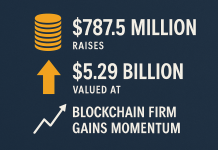[ad_1]
Automotive giant Ford has entered a partnership with IBM, Huayou Cobalt, and LG Chem to build a blockchain platform to monitor the supply of cobalt from the Democratic Republic of Congo as part of an attempt to ensure that child labor does not make up any part of its supply chain.
Ford & IBM Partner to Monitor Cobalt Mines
Announced on Wednesday, the project, which will be managed by the global responsible-sourcing consultant RCS Group, will use IBM’s proprietary blockchain platform to monitor cobalt supplies used in the production of lithium-ion batteries.
The move comes at a time when other primary production industries are also exploring blockchain technology as a potential solution for effective supply chain tracking to ensure that minerals sourced from conflict zones or using child labor in poor countries such as the DRC do not enter the global market. In October, CCN reported that Alrosa, the world’s second largest diamond mining company joined Tracr, a blockchain-based supply chain monitoring system developed by diamond mining giant De Beers Group.
Like the Ford project, Tracr was developed to ensure that diamonds entering the global market from poor West and Central African countries are not sourced from conflict zones, which indirectly prolongs armed conflicts by funding local warlords. Like rare-earth metal mining, diamond mining in some parts of Africa also has a problem with child labor which is being tackled with the deployment of blockchain implementation alongside IoT tracking.
Challenges Involved in Tracking Metals

Unlike diamonds, which move as individual pieces from mine to market, metals present an altogether different challenge for the monitoring project because they are often smelted together, at which point it becomes nigh on impossible to identify what came from where. To deal with this challenge, IBM says it is looking into the possibility of AI-aided chemical analysis to identify the geographical origin of cobalt so as to ensure that “clean” cobalt is not smelted with “dirty.”
The challenge of sanitizing the cobalt supply chain is particularly important because lithium-ion batteries are set to achieve an even higher level of demand as the world increasingly looks toward electric vehicles in addition to the vast number of everyday electronic devices which are dependent on lithium-ion cells.
According to RCS, the challenge posed by artisanal miners – unregistered local panhandlers – will be dealt with by bringing them into a blockchain network of validated participants so that it is possible to get a picture of who is mining what and where cobalt supplies are coming from.
Speaking to Reuters, IBM General Manager, Global Industrial Products, Manish Chawla said:
There is no fool-proof method, but you have to keep the ball moving forward, to keep raising the level of accuracy.
Featured Image from Shutterstock
[ad_2]
Source link




